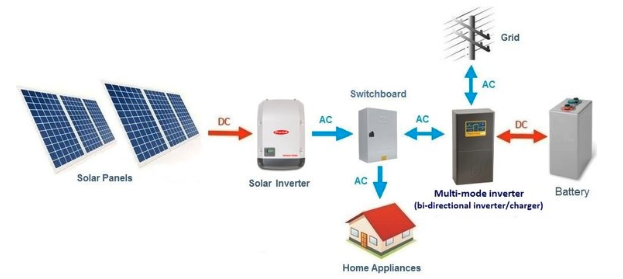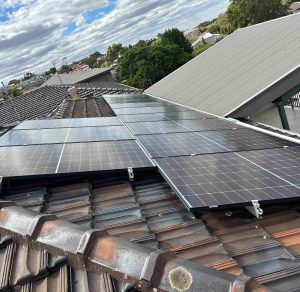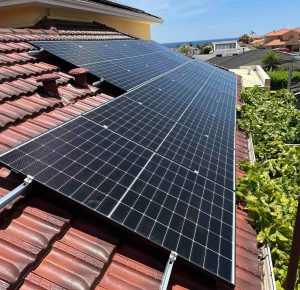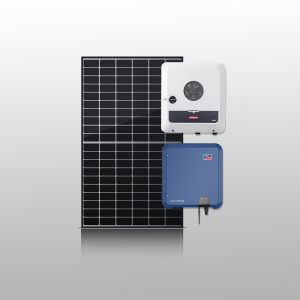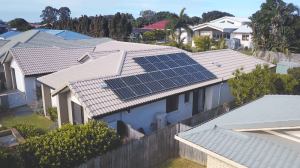Setting up a battery energy storage system for specific behavior requires considerable knowledge of battery programming and available technology. AC coupled systems are most popular and use a common solar inverter coupled to a multi-mode inverter or inverter/charger to charge the battery. Although simple to setup and very powerful they are slightly less efficient at charging than DC coupled systems (90-94%). These systems are however very efficient for powering AC loads during the day and can be expanded with multiple solar inverters to form micro-grids. The figure shows the basic layout diagram of an AC coupled solar system with battery – Grid-tie (hybrid) setup.
Most modern off-grid homes use AC coupled systems due to the advanced, multi-mode inverter/chargers, generator controls and energy management features. And since solar inverters operate with high DC voltages (up to 600V or higher), very large systems can be installed. AC coupling is also quite well suited to medium-large 3-phase commercial systems.
AC Coupled Solar System – Advantages & Disadvantages
Advantages mainly include:
- Higher efficiency when used to power AC appliances during the day such as air-conditioning.
- Lower installation cost for larger systems above 3kW.
- Can use multiple solar inverters in multiple locations (AC coupled micro-grids)
- Most solar inverters above 3kW have dual inputs (2 x MPPT) so solar panels can be setup in different orientations and tilt angles.
- AC coupled systems can use a combination of AC and DC coupling
Disadvantages consist of:
- Slightly lower efficiency when charging a battery system – approximately 92%
- Quality Solar inverters can be expensive for small systems.

